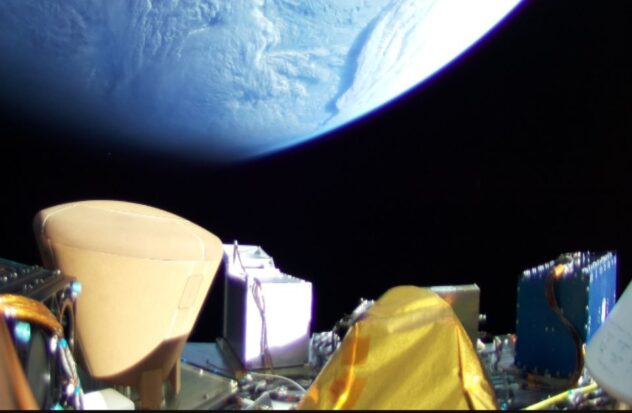MIAMI.- On May 29, the European Space Agency (ESA) launched the EarthCARE (Earth Cloud Aerosol and Radiation Explorer) satellite to measure the effects of clouds, aerosols and radiation on the Earth’s climate.
Although experts expected the EarthCARE satellite to begin providing results in a little more than a month in orbit, it has already sent back crucial data for understanding the dynamics of the climate system.
All of this has to do with the planet’s energy balance, which is essential for temperatures to remain stable.This is the balance between the amount of solar radiation entering the Earth and the proportion of thermal energy that is emitted and returned to outer space. This is affected by aerosols from both human and natural activities and greenhouse gases.
Aerosols are tiny particles suspended in the atmosphere and play a key role in cloud formation, Hence the importance of scrutinizing this phenomenon..
The energy in the atmosphere is a balance between incoming solar radiation, which warms our planet, and outgoing thermal radiation, which cools it. Clouds have a strong influence on the Earth’s energy balance and changes of just a few percent can have a major effect on the climate, that balance is essential for temperatures to remain stable.
The satelite showed the first images that serve to understand the internal structure of clouds, thanks to the cloud profile radar instrument. It also provided key information for the analysis of the effect of the different components of the atmosphere on the reflection of solar radiation.
The mission carried out in collaboration with the Japan Aerospace Exploration Agency (JAXA) has a broadband radiometer that is capable of “precise measurements “The EarthCARE instrument is a system of measuring the reflected solar radiation and the emitted thermal radiation,” explains ESA. This means that, together with the other instruments that make up the instrument, EarthCARE can also measure the Earth’s energy balance.
“Of course, we have never doubted the potential of the EarthCARE broadband radiometer, but here we see, at such an early stage of the mission, that the instrument is working very well and providing excellent data,” commented ESA’s Director of Earth Observation Programmes, Simonetta Cheli.
The broadband radiometer can measure the amount of energy reflected off the top of the atmosphere in three directions at once (directly below the satellite, forward in its orbit, and backward), providing a more complete picture of the phenomenon than would otherwise be possible. Furthermore, the information it provides is used by scientists to obtain a three-dimensional view of how radiation interacts with clouds and aerosols.
Unraveling the mysteries of clouds and aerosols, how they influence climate regulation and the delicate balance of temperature on Earth, is the mission of EarthCare.Aerosols have volatile organic compounds that, when they come into contact with sunlight, produce ozone gas in the lowest layer of the atmosphere.
Source: European Special Agency / Infobae / Diario las Américas



